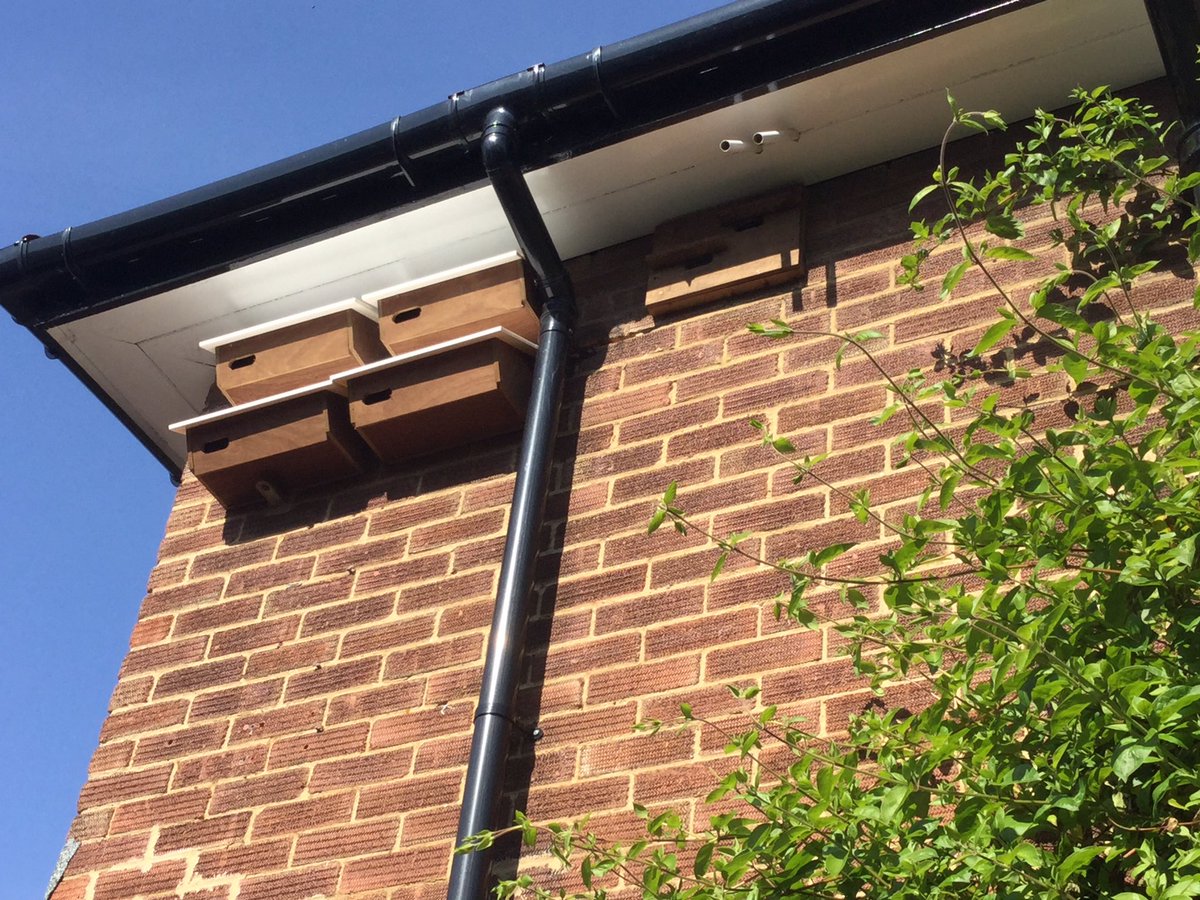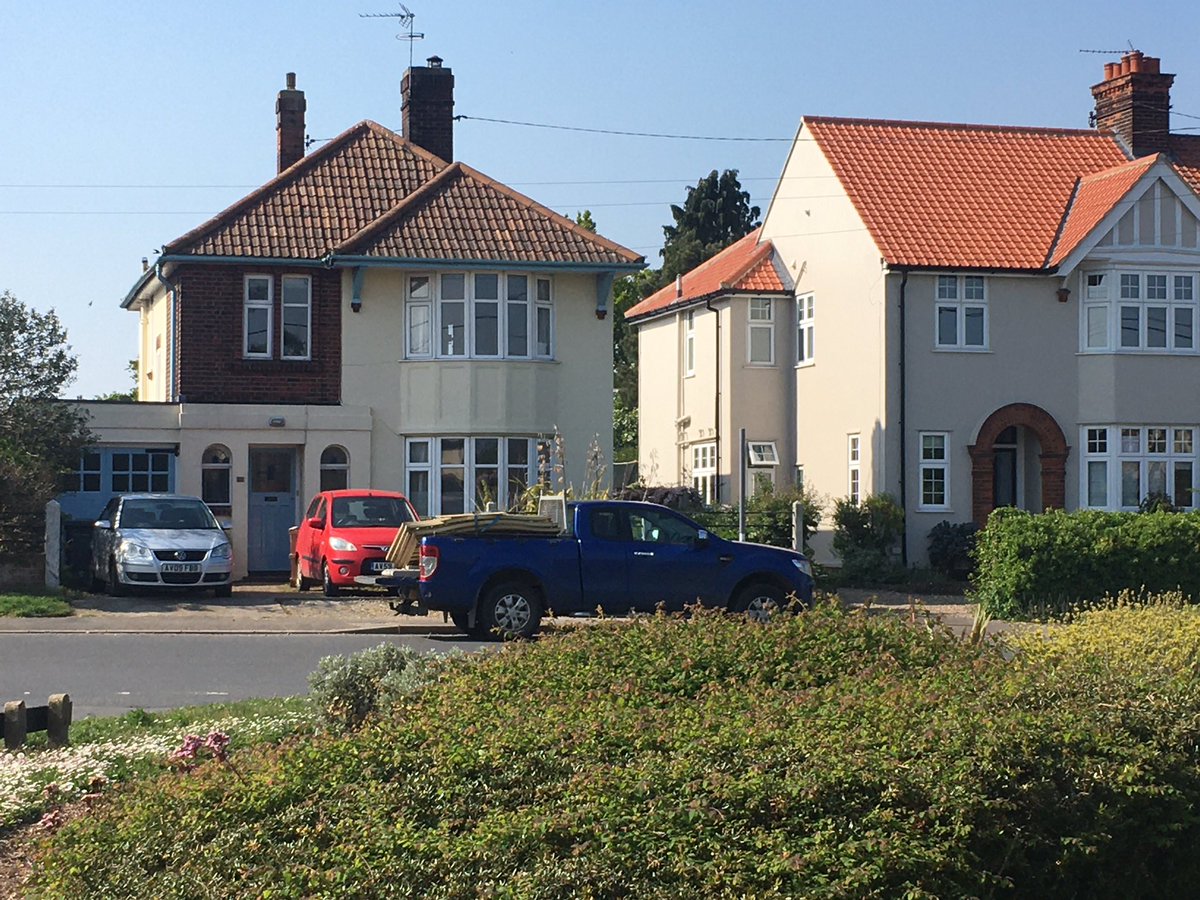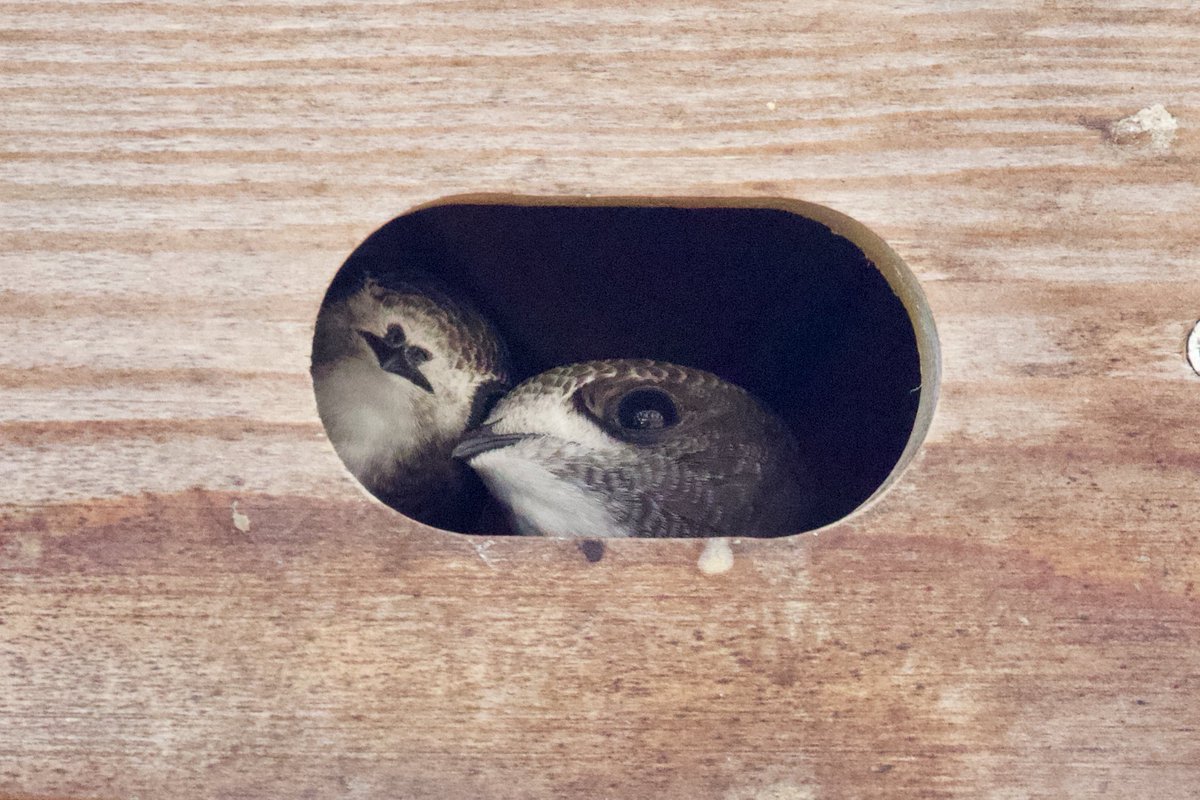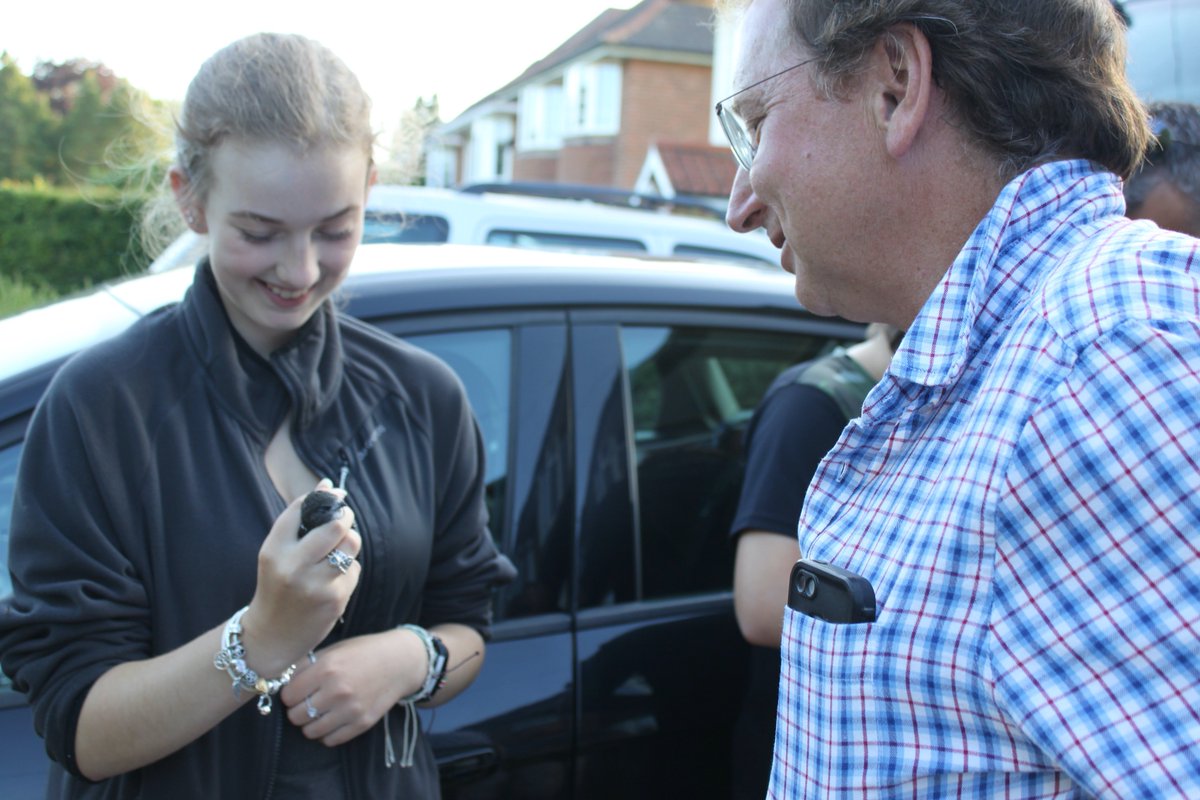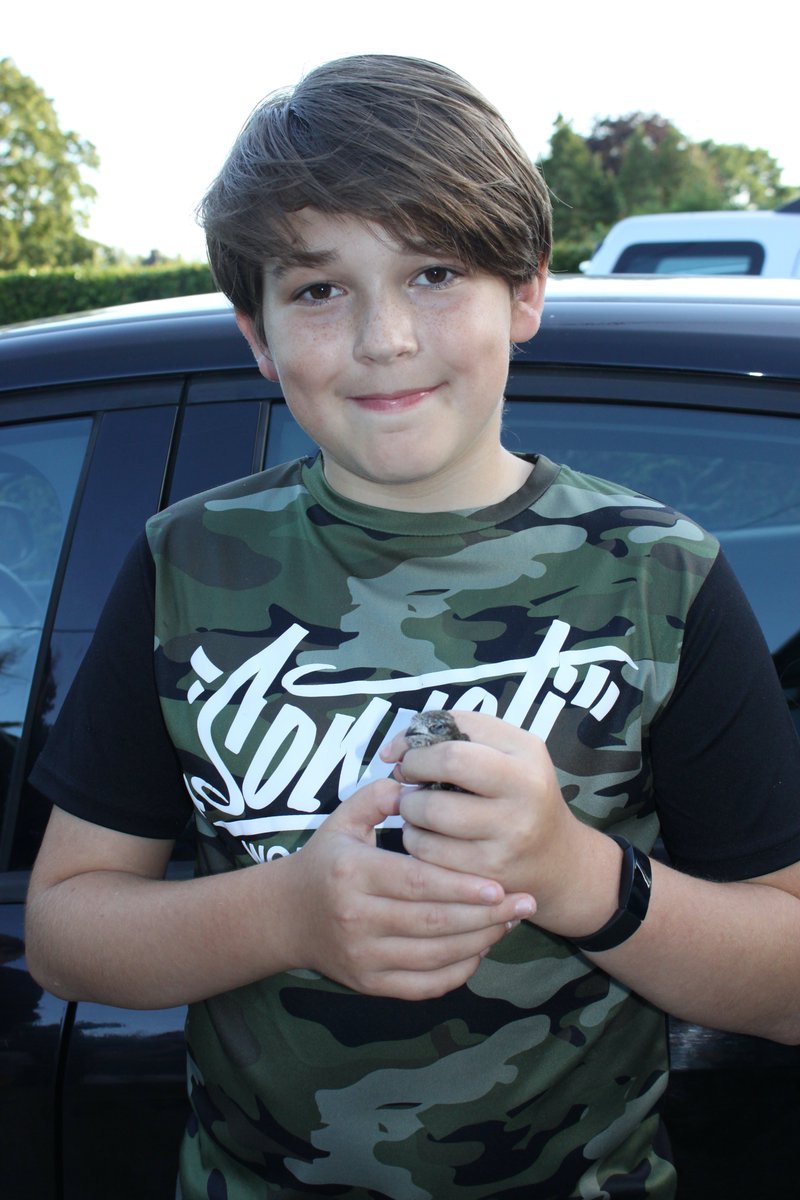Swifts weigh as little as a Cadbury’s Crème Egg and once fledged will not land for 2 years. Last year& #39;s brood migrated off to southern Africa and will return, joining their parents who will be arriving soon. Swifts feed, sleep and even mate on the wing, only ever landing to breed
Swifts fledge in their year 1, return in years 2+3 and generally start to breed on their return in year 4. A Swift that survives to maturity can live for a further 15 years. They pair for life & can be nest site faithful, partnering up year after year & fledging two chicks.
Around a nest site the adults will be tending to their chicks. They feed up over insect rich areas before returning to the nest where they may roost. Younger birds remain on the wing noisily ascending to great heights in the evening to sleep.
Both adults and young join in in screaming parties around nest sites, calling out to each other and being answered by the nesting birds. This behaviour helps year 3 ‘teenage Swifts’ locate and investigate potential nest sites, and this maybe the first time the young bird lands.
Historically UK Swifts nested in nooks & crannies in cliffs and trees (they still do further east in their range), but since Roman times Swifts have exploited our built environment to find nest sites in eaves and under tiles on buildings and have become a communal urban nester.
Modern building techniques do not favour Swifts. The requirement to achieve an efficient, air-tight environment with minimal heat loss & sound transmission reduces the opportunities for Swifts to nest and existing nest sites are NOT legally protected outside the breeding season.
Renovation works and conversions of older buildings often result in the unintentional destruction of Swift nest sites. The Swift population in SE England halved between 1994 & 2007 with a further third of the remaining population lost between 2009 & 2016. Swifts are in trouble….
The easiest way to help Swifts is to log their nest sites. If you see screaming Swifts flying at low level they are nesting close by. Log these locations on http://Suffolkbis.org.uk/swifts .">https://Suffolkbis.org.uk/swifts&qu... Suffolk planners only consult here and will then oblige local developers to install nest bricks
You can of course fit nest boxes on any building you have control over; houses, offices, churches and community buildings have all been decorated with them. Boxes should be fitted ~4.5m up, roof height of a 2 storey house, with a clear line of flight for the Swifts to drop out.
Swifts are communal nesters so the fitting of multiple nest boxes is preferable. Playing their scream calls, mimicking their low-level flight display, is vital as it attracts the year 3 ‘teenager’ Swifts into investigating potential nest sites ready for their return in year 4.
Swift calls should be played from early May to the end of July. There is a chance of attracting in Swifts early which have lost their previous year’s local nest site. Year 2 and 3 birds arrive later in May and will investigate for nest sites throughout June & July.
There are active local groups throughout Suffolk that can help develop any ideas for projects; BSE, Felixstowe, Framlingham, Woodbridge, Beccles and Nayland to name but a few. If you wish to help Suffolk’s Swifts please do get in touch, Swifts@SuffolkBirdGroup.org #SOSSwifts
Swift nest boxes can be fitted on any elevation. They should be at 1st floor window height where birds have a clear line of flight in and out. The ability to play their calls is essential to help the birds find them. #SaveOurSuffolkSwifts
Save Our Suffolk Swifts offer educational talks to any local wildlife groups that are interested in helping Swifts. With the current lockdown we are offering these talks as webinars. Email Swifts@SuffolkBirdGroup.org if your group would like one. @RSPBMinsmere @suffolkwildlife
Here is a tale of two roofs. On the left Swifts, House Sparrows & Starlings nest without any disturbance to the occupier. House on the right was re-roofed ~5 years ago, to modern standards and has nothing nesting in there.
Swifts both breed for life and are nest site faithful, returning to the same place each May to breed. If one of the pair fails to arrive the survivor will scream & display to attract in a new mate. This process is repeated & repeated so nest sites are used for many generations.
Swift Awareness Week is a great time to monitor Swifts. Warm humid evenings are ideal to look out for low-level screaming parties and to wait and see if a bird enters a nest site. Download the SwiftMapper App, it is quick and easy to use and its data is invaluable. #SaveOurSwifts
This is the result of Swift conservation. We aim to record nest locations both to protect them and to encourage planners to request nest bricks/boxes in new developments. We also want to both boost existing & create new colonies by fitting nest boxes @suffolkwildlife @swiftsweek
During periods of poor weather it is easy to think that all the Swifts have left early. However both eggs and nestlings have adapted so can be left unattended whilst adults feed up far away from the wind and rain. The year 2 & 3 non-breeders temporarily disappear off too.
Warm evening walks between from mid-June to mid-July are great for searching for nest sites. Adults will be busy feeding young going in/out, with younger birds screaming low & looking for nest sites. Swifts with nesting places drop in to roost around dusk. SwiftMapper zap this!
Here is a short video from ‘Save Our Suffolk Swifts’ explaining Swift’s behaviour around their nest sites. @SuffolkBirdGrp @suffolkwildlife @swiftsweek @SaveourSwifts. Thanks to both @SimonHooton3 and http://Swift-Conservation.org"> http://Swift-Conservation.org
It is important to record Swift nest sites, their screaming parties and absences too. This data is fed into the Suffolk planning system giving them the opportunity to oblige developers ti install nest bricks/boxes. Here is a short video from Save Our Suffolk Swifts to explain.
It is thought that Swifts pair for life and are nest site faithful, breeding sites in the nooks and crannies of cracks & crevices will be used for many generations. Ringing and nest recording can provide vital information. Here is a short video from SOSSwifts explaining ringing.
With the access hole to the nest box was blocked up in case an adult returned, the 2 young swiftlets were gently removed by @JacTurner_Moss, then ringed and re-positioned back into the box. Here the young are with @ezany2000 & @NatureDanZant
Once safely back in their box the entrance hole was unblocked and the wait started for a parent to return to feed their young. The adult was then mist-netting exiting the nest site and promptly collected by @JacTurner_Moss
The parent was ringed and released into the wind by @ezany2000 where it joined in with a low-level screaming party of 3 other Swifts. With a bit of luck this very Swift will be in the same nest box at the same time next year. @suffolkwildlife @SuffolkBirdGrp @JustZant #SOSSwifts

 Read on Twitter
Read on Twitter